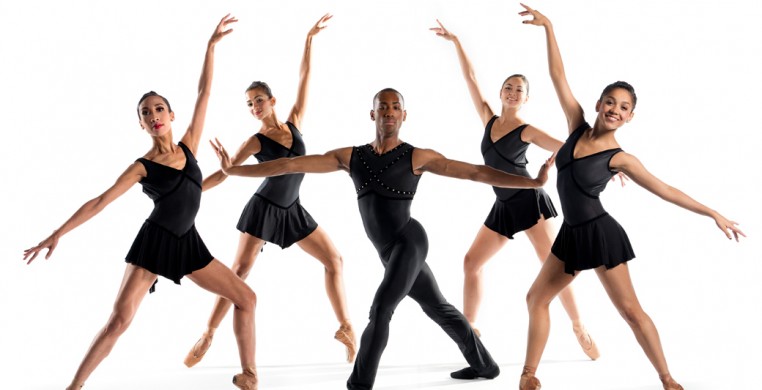Before there was Misty Copeland, there was Virginia Johnson. A founding member of Dance Theatre of Harlem (DTH), Johnson was universally recognized as one of the great ballerinas of her generation, a pioneer for women of color in ballet. When she returned to DTH in 2010 it was to lead the organization, whose company was in the middle of an eight-year hiatus; only the school and a small touring ensemble of young dancers remained active. A couple years later DTH was ready to rebuild. Johnson hand-picked new company members from the ensemble and a national audition tour, rebranding one of the few American dance companies committed to promoting African-American stories through classical ballet. Despite 45 years of history, Johnson essentially started from scratch. The three works on DTH’s fall program, presented on tour for three nights at the Auditorium Theatre, run the full gamut of possibilities in ballet with something old, some things new, some for fun, and a few things that make you go hmm.
The opener, Robert Garland’s 2016 “Brahms Variations” is a conventional take on classical ballet, without a hint of its modernity. The beginning theme is precise, pricked, exacting, as are the daffodil-colored, drop-waist tutus and traditional waistcoats. As Brahms’ Variations On A Theme By Haydn devolves into relative chaos, so too does the dance become a bit more joyously cacophonous. Rainbow-hued side light accompanies the dancers’ happy romp, turning on an off for hard black-outs between some of the variations; it’s nicer when the transitions happen in the light, which is less often the case, but mimics how it might be if we were watching an orchestra play. Featured ballerina Chyrstyn Fentroy is a bit too tall for her partner, Da’Von Doane, particularly in the ballet’s final finger turns, but this is nothing compared to the exuberance and excellence they both bring to this lovely slice of pure fun.
Garland’s variations are miles from Francesca Harper’s “System,” an original work for the company premiered just four months after “Brahms Variations.” “System” takes a broad stroke to institutional racism in the United States, a response to recent events involving violence against people of color. Harper, a native Chicagoan, used a passage by Jorge Andres Villarini and an original John Adams score (performed live by exceptional players from the Chicago Sinfonietta) as her inspiration; the choreography hints at its theme in not-so-literal ways and instead relies on a chilling visual effect created with lighting designer Roma Flowers. A light set on the stage’s apron illuminates the dancers from the front as they gather in a clump, casting their shadows onto a beige drop upstage. Hands are drawn behind backs, with looks of helplessness and alarm, as if headlights from a car shine in their eyes. The dancers are dressed in black by designer Pamela Allen-Cummings, some in sequined tops, some in half kilts, pleats draping over only one thigh. Pervasive use of the strong diagonal, hoisting a dancer over the backs of others as they move quickly from upstage left to downstage right, leaves three dancers on stage like an ellipsis. It’s a false ending that fools the audience, more poignant, perhaps, than the ballet’s actual end.
Created during his tenure at the Compañía Nacional de Danza in Spain, Nacho Duato’s “Coming Together” looks its 1991 vintage, but continues to hold its weight on 12 of DTH’s dancers. The work is set to a score by Frederic Rzewski, which repeats a phrase from a famous letter by Sam Melville penned during his incarceration at Attica Prison. Melville, convicted for his role in anti-American bombings during the Vietnam War, talks of his fortitude and ability to thrive in the tough and chaotic environment in which he lived. Duato’s take on the topic is an unserious, highly physical dance that doesn’t appear to specifically reference Melville in any way. The men are dressed in superhero-esque t-shirts, whose single letters, when put together, spell out “I think” (the first two words of the score’s text). The women give literal references to ballet, modern (specifically Martha Graham), and American jazz dance through their costumes, movement, and even a gold lamé curtain. Is dance, like prison, a tough and chaotic environment? I hope that’s not what Duato was trying to say. “Coming Together,” taken at face value, is a lec-dem on dance, physical fun, and an apt closer for this well-rounded program.

